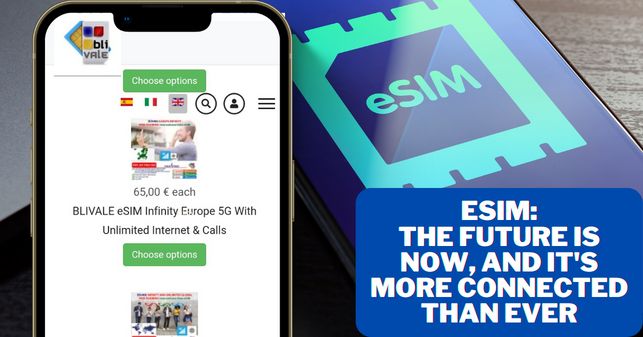In today’s fast-paced world, staying connected is more important than ever. Traditional SIM cards have played a crucial role in enabling communication on mobile devices for decades. However, the advent of eSIM technology has brought about a new era of connectivity. In this blog post, we will explore the concept of eSIM, its benefits and challenges, and how it is revolutionizing our digital lives.
Understanding eSIM Technology
eSIM stands for embedded Subscriber Identity Module. Unlike traditional SIM cards that are physical chips, an eSIM is integrated into the device itself. It eliminates the need for physically swapping SIM cards when changing network operators or traveling to different countries.
The eSIM technology consists of a small chip soldered onto a device’s circuit board and can be remotely activated by network carriers over-the-air (OTA). This allows users to connect to any compatible network without having to rely on physical SIM cards.
Benefits of eSIM
- Enhanced Convenience. One of the key advantages of eSIM is its convenience factor. With traditional SIM cards, users often face the hassle of carrying multiple physical cards or swapping them when switching networks while traveling internationally. However, with eSIM technology, all it takes is a few clicks to switch between compatible networks directly from your device settings.
- Flexibility in Network Selection. eSIM offers users greater flexibility in choosing their network operators. Gone are the days when you were tied down to a specific carrier due to compatibility issues with your device’s slot size or restrictions imposed by locked devices. With an eSIM-enabled device, you can easily compare and switch between various network providers based on factors such as coverage, pricing, and data plans.
- Simplified Travel Experience. For frequent travelers or those who regularly switch between countries, eSIM technology is a game-changer. Instead of purchasing local SIM cards or relying on expensive roaming plans, users can easily switch to a local network provider by scanning a QR code or downloading a carrier profile. This not only saves money but also eliminates the hassle of dealing with physical SIM cards.
Applications of eSIM
- Mobile Devices. eSIM technology has gained significant traction in smartphones and tablets. Major device manufacturers such as Apple, Google, Samsung, and Huawei have embraced this technology in their latest flagship models. With eSIM-enabled devices, users can enjoy seamless connectivity without the need for physical SIM cards.
- Internet of Things (IoT). The IoT industry is rapidly expanding, with an increasing number of devices requiring cellular connectivity. eSIM proves to be highly beneficial in this sector due to its compact size and remote provisioning capabilities. IoT devices such as smartwatches, fitness trackers, connected cars, and home automation systems can leverage eSIMs for easy network activation and management.
- Wearable Devices. Wearable devices have become immensely popular among consumers for their convenience and health tracking capabilities. With eSIM technology integrated into smartwatches and other wearable gadgets, users no longer need to rely on Bluetooth tethering with their smartphones for connectivity. This enables standalone functionality and independence from smartphones.
Challenges and Concerns
While the adoption of eSIM presents numerous advantages, there are also challenges that need to be addressed:
- Limited Carrier Support. Although major network operators worldwide have started offering eSIM support, it is still not universally available across all carriers. Users need to ensure that their preferred carrier supports eSIM technology before investing in an eSIM-enabled device.
- Device Compatibility. Not all devices currently on the market are equipped with eSIM functionality. It may take time for this technology to become widespread across all smartphone models and other devices. Users should check the specifications of their desired device to ensure it supports eSIM.
- Security Concerns. With any new technology, security concerns are inevitable. As eSIM relies on digital activation and remote provisioning, there is a potential risk of unauthorized access or hacking attempts. Network carriers need to implement robust security measures to protect user data and prevent unauthorized SIM swapping.
Future Prospects of eSIM
The future looks promising for eSIM technology. As more network operators embrace this innovation and expand their eSIM support, consumers will have greater freedom in choosing their service providers. With the growth of IoT devices and wearables, the demand for eSIM-enabled products will continue to rise.
Furthermore, advancements in security protocols will ensure that user data remains protected from potential threats. The convenience and flexibility offered by eSIM will undoubtedly drive its adoption across various sectors in the coming years.
Conclusion
In conclusion, eSIM technology is revolutionizing how we connect with the world. Its benefits in terms of convenience, flexibility, and simplified travel experiences are reshaping the way we use mobile devices and IoT gadgets. While there are challenges to overcome, such as limited carrier support and device compatibility, the future prospects of eSIM look promising.
As more network operators and device manufacturers embrace this technology, users can expect a seamless experience with enhanced connectivity options at their fingertips. So get ready to embrace the future – where staying connected has never been easier!









